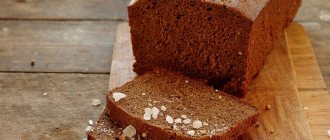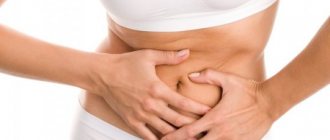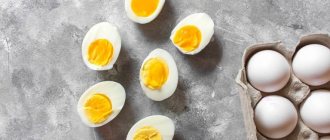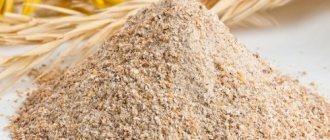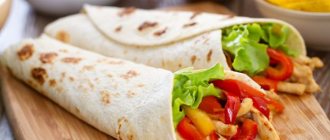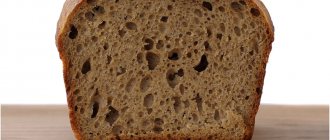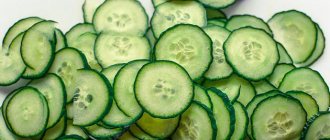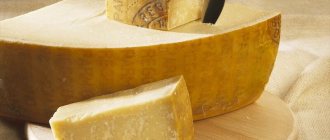Don't eat bread! Gluten makes you fat, tired, puffy! Something like this is the text that comes out of almost every second mouth that is somehow related to fitness today. It’s strange, but the rejection of the original Russian product is being advocated by citizens who have nothing to do with dietetics, but are known, at best, for winning a couple of fitness bikini competitions. At worst, nothing but a thousand followers on Instagram. On the other hand, one hears: “Eat bran bread for weight loss! All you have to do is replace your regular loaves with it, and you will lose weight! Easy and fast." Is there some special bread demon that sews up our office skirts at night, and can healthy bran save us from suffering? As they say, not everything is so simple, and not everything is so fast. You may or may not eat bread. And in both cases, we will lose weight if we do everything right.
What is bran bread made from?
Bread with bran is prepared from the same set of ingredients as regular bread, but the same amount of bran is added along with the amount of wheat flour. Also, vegetable oil, salt, various additives, water, sugar, and yeast are added to the product.
We recommend reading: What are the benefits of yeast-free bread and how to bake it
Bran is obtained after grinding flour - this is the hard shell from which grain is cleaned for the production of wheat and other types of flour. Bran is also processed, crushed into large or small pieces and added to the baking of some baked goods, resulting in a product with a large amount of useful substances.
We recommend reading: What are the benefits of wheat bran, reviews
Benefits for weight loss
Bran bread, the harms and benefits of which we are discussing today, is a healthy dietary baked product. Many people think that on a diet they should completely abstain from eating flour products. Of course, it’s worth quickly walking past the shelves in the store with aromatic loaves, pastries, cakes, rolls and crispy French baguettes. But it is recommended to linger near the shelf where the bran bread is.
White bread or a loaf contains simple carbohydrates, which do nothing but harm our figure. Another thing is bran bread. It contains complex carbohydrates that will not be stored in problem areas. They are processed by the body for a very long time, eventually turning into useful energy. Consequently, bread with bran is not only not harmful to the figure, but even promotes rapid fat burning.
Composition and calorie content of bread with bran
Bran bread made from wheat flour has a large amount of vitamins, micro and macroelements.
| Compound | Quantity per 100 g |
| Calorie content | 248 kcal |
| Squirrels | 9 g |
| Fats | 3.5 g |
| Carbohydrates | 48 g |
| Alimentary fiber | 4 g |
| Ash | 2 g |
| K | 227 mg |
| Ca | 70 mg |
| Fe | 3 mg |
| Mg | 80 mg |
| Mn | 1.668 mg |
| Ph | 190 mg |
| Na | 490 mg |
| Cu | 220 mg |
| Se | 31 mg |
| Zn | 1.4 mg |
Feeding vitamins, macro and microelements, the fresh bran product contains Omega-3 and Omega-6, which affect brain activity, skin condition, and the functioning of the circulatory system.
Benefits for the stomach and intestines
It has been proven that bread with bran helps normalize the functioning of the stomach and intestines. When wheat husk processed into flour enters the body, it swells and creates a feeling of fullness. A small piece of bran bread is both healthier and more filling than the same slice cut from a baguette or white bread.
Experts say that the main task of bread with bran is to cleanse the intestines. In addition, the product helps reduce appetite. Eating bran helps fight peptic ulcers and digestive problems. The substances that make up such bread help the body absorb starch more slowly, thereby reducing the glycemic index.
What are the benefits of bran bread?
Not everyone likes the taste of the product, or rather, a small number of people, so it is bought only in certain cases: during the treatment of diseases of the digestive system, for weight loss, and rarely because of the taste. For people suffering from diabetes, bran bread helps to slowly lower blood sugar levels and reduce cholesterol.
Benefits of bran bread for digestion
The fiber contained in the bran product has a positive effect on the gastrointestinal tract, cleansing it of waste and toxins, making the intestinal walls elastic. Prevents constipation, improves metabolic processes, which promotes better absorption of food. Bran bread is especially useful during a diet for pancreatitis and gastritis.
The benefits of bran bread for weight loss
Bran bread, the harm and benefits of which is still a controversial issue among nutritionists: whether it belongs to dietary food products. Naturally, while following a diet, baked goods should be excluded from the diet, but this does not apply to the bran product. The beneficial substances included in its composition help reduce the amount of cholesterol in the blood, accelerate the metabolic process, and accordingly, the natural process of burning fat occurs.
A big plus of consuming such a product is quick satiety, due to the fact that the bran begins to swell in the stomach, maintaining a feeling of fullness.
B vitamins affect the nervous system, helping the body overcome stressful situations and, accordingly, avoid problems. During a diet, the body does not receive enough substances that can negatively affect the condition of the skin, hair, and nails. Bran bread allows you to replenish most of the micro and macroelements that strengthen nails and increase skin elasticity.
Fiber helps regulate the bowel movement process, which promotes weight loss.
Is bran bread ok for pregnant and lactating women?
During pregnancy and breastfeeding, a woman should be selective in choosing foods, primarily rely on her feelings after eating a new food, look at the baby’s reaction and the doctor’s recommendations.
Bran bread is a very healthy product in the diet of an expectant mother or one with a newborn. It has almost no harmful effects on the body, except for individual intolerance. First of all, it contains folic acid and magnesium, which affect the development of the fetal neural tube and accordingly regulate the processes of proper and healthy development of the unborn baby. Most pregnant and nursing mothers are faced with problems such as constipation, bloating, and flatulence, without having any medication to eliminate this problem, and bread with bran allows you to solve this problem gently and painlessly.
The amount of iron contained in the bran product is 17% of the daily value, which improves blood composition and increases hemoglobin, which is often below normal in pregnant women. Omega-3 and Omega-6, as well as lutein, affect visual acuity, increase attention and improve memory.
Is bran bread good for children?
Children under three years of age are not recommended to be given bran bread, as it can bring less benefit than harm: it increases intestinal motility, which will affect the bowel movement process. The stool will become liquid, which may release beneficial substances and microorganisms, which can cause dehydration. Children over three years old can add bran to their diet, but not more than 50 g per day. For schoolchildren, many experts recommend eating bread with bran, as it helps improve memory, increases concentration, increases physical endurance, and strengthens the immune system.
Food for the poor
If several centuries ago such a product was considered the prerogative of the poor and low-income population, now, on the contrary, humanity is abandoning products made from high-grade white flour in favor of bran baked goods. The merchant class, of course, at one time did not even think about the benefits of bran bread, simply considering it the food of the poor. Civilization developed, scientists conducted experiments, conducted experiments, and views on many food products changed. About twenty years ago, the opinion about bran bread changed dramatically.
Today, many people prefer dietary white meat to fast food, green tea to sweet soda, fresh fruit to cakes and pastries, and bran bread to white rolls made from premium flour. The harm and benefits of this product are explained by the composition, so let's start with that.
Rules for eating bran bread
Bran bread should be consumed as an addition to the main dish, at any time of the day, but remember that it can cause diarrhea. Introduce into the diet with caution if you have chronic gastrointestinal diseases.
If you previously did not have products containing bran in your diet, you need to start with a small piece and observe the body’s reaction, gradually increasing the dosage.
The best combination of bran bread with fermented milk products, which help absorb more nutrients, is especially useful to eat bran bread with cheese and butter in the morning, such a breakfast will energize and saturate the body for a long time.
Mothers who have given birth and are breastfeeding should stop using it in the first month, because it will affect the formation of stool in the baby.
Danger and harm
The following health problems are contraindications for eating bran bread:
- Acute gastritis.
- Pancreatitis.
- Colitis.
- Osteoporosis.
- Peptic ulcer of the stomach or duodenum.
- Acute hemorrhoids.
- High temperature and acute period of influenza.
If a patient has acute inflammation of the mucous membrane, the doctor will never advise him to eat bran bread. But if the disease is in the dormant stage, then bran, on the contrary, can have a positive effect on the healing process. Be sure to consult your physician before use.
The most important rule is compliance. Even if you are obese, you can eat bread, but it is important that it is of high quality, healthy and correctly chosen. Bran bread is not a panacea for all diseases. This is a product that can support your body, relieve some health problems and prevent the development of more severe conditions.
How much bran bread can you eat per day?
The best bread for consumption should contain at least 20% bran.
- For children from 3 to 7 years old, the daily dose should not exceed 50-70 g.
- For an adult up to 300 gr. per day, with 30-100 g per dose.
- For those who are on a diet – 2-3 pieces per day, 40-100 g.
- Lactating women and pregnant women up to 150 g per day.
When using it, you should be attentive to your body, noticing the effect on the state of the body. Many manufacturers add various food additives to the product, which, in combination with other products, can cause an allergic reaction.
The history of bran bread
Bran is the hard shell of the grain that remains after it has been processed.
Contains dietary fiber. For a long time, this part of cereal crops was considered a waste and was practically not used in the food industry.
The main goal was to obtain clean, fluffy and white baked goods, but its composition does not have much benefit for the body.
In the last hundred years, interest in healthy and wholesome nutrition has only been growing and studies have shown that hard grain shells are beneficial for humans and they began to be added to baked goods.
How is it different from other types?
The main difference between bran bread and other types of bread is that hard grain shells are added to it. The type of dough and flour that is used to prepare such baked goods can be any.
White, whole grain, rye and other types of bread may be called bran bread if grain shells are added there in accordance with GOST rules.
How to bake bran bread at home
For cooking you will need coarse flour (wheat, oatmeal, rye).
- Vegetable oil (added to the dough and greased the mold).
- Dry yeast).
- Salt.
- Sugar.
- Soda.
- Water.
- Any additives (seeds, raisins, spices).
We recommend reading: Baking soda: beneficial properties, uses, how to take
Instead of wholemeal flour, you can buy regular wheat flour and bran.
Bran bread recipe in the oven
To prepare bran bread in the oven you will need:
- 320 g wheat flour;
- 100 g bran;
- 30 g vegetable or olive oil;
- 8 g dry yeast;
- 30 g sugar;
- 15 g salt;
- 10 g soda;
- 250 ml water.
The cooking process takes place in several stages.
- Dissolve sugar and yeast in a deep container (in warm water).
- Add salt, soda, seeds or spices to the water.
- Add flour into the resulting mixture in small portions to prevent lumps from forming.
- Knead thoroughly with a spoon, add bran and vegetable oil.
- After that, take the dough out onto the table and knead it, but so that it is not “clogged” or too soft, sticking to the table and hands.
- Transfer the dough into a container, cover with a towel, and leave in a warm place for 2 hours. During this time, it should double in size, after which, lightly mash it again and put it in the mold.
Depending on the type of oven, you should select a temperature range from 180 to 200 degrees. It will bake for 40-60 minutes. Readiness must be checked using a wooden stick. After cooking, do not immediately remove the product from the oven: leave it for 10-15 minutes with the oven open and turned off to cool.
Recipe for bran bread in a bread machine
To prepare bran bread in a bread machine you will need:
- 2.7 tbsp. wheat flour;
- 1.8 tbsp. bran;
- 1.5 tbsp. boiled warm water;
- 4 dec. l. vegetable or olive oil;
- 0.8 dec. l. dry yeast;
- 2 dec. l. Sahara;
- 0.5 dec. l. salt;
The cooking process takes place in several stages.
- Prepare a bread maker container.
- Add yeast, flour and bran, add salt, sugar, butter.
- Water pours in in a thin stream.
- The container is installed in the bread machine, after which you need to set the baking mode for rye bread.
Healthy bran bread will be ready in 3.5 hours.
How many calories are in 100 grams of bread
In the old days there were 2 types of bread: white wheat and black rye. Today on the shelves of bakery departments you can see various types of bread: wheat, gray, rye, Borodinsky, Darnitsky. The calorie content of bread per 100 grams will be different for each type, and depends on the flour and the ingredients included in the dough.
Sliced loaf
Baton is a French word and means “bar”. Many people love cross-cut baked goods, but is it healthy? The loaf is made from refined premium flour, purified from germs and bran. It is pure starch, devoid of vitamins and fiber. The whole product weighs 0.4 kg, with a total calorie content of 1060 kcal.
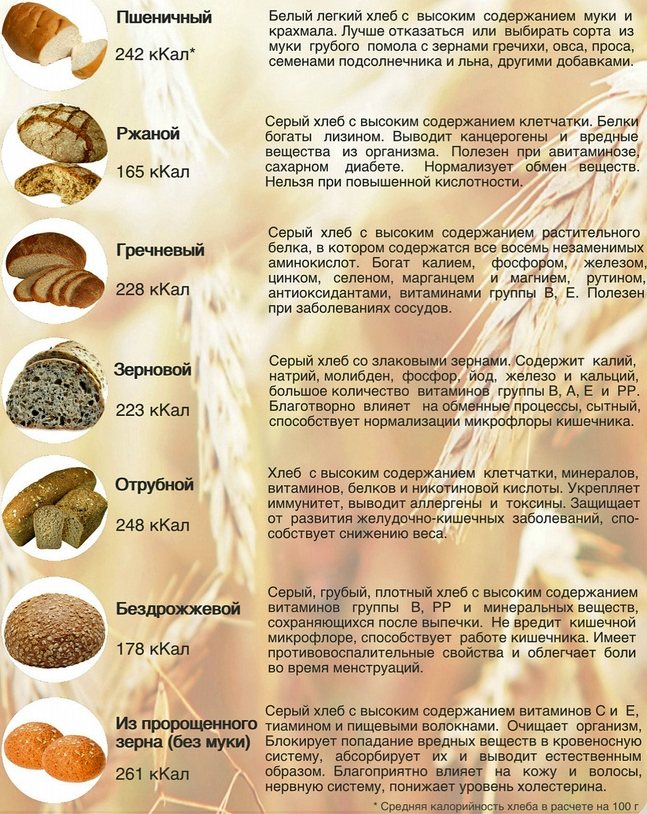
An eaten loaf is a source of fast carbohydrates, which turn into fatty tissue and contribute to weight gain. In short, this is not the most useful product for those who want to be healthy and slim. I wonder why there are cuts on the loaf? — The fact is that its dough contains a lot of gluten (gluten), which rises well and gives the product fluffiness. When baking, the cuts help the uniform release of carbon dioxide - the dough increases in volume, but does not break, but opens.
Please note: The energy value of the loaf is 264-265 kcal/100 g.
White wheat bread
Wheat bread is considered healthy if it is made from wholemeal flour. It is not so white and fluffy, but it contains a lot of fiber, takes a long time to digest, maintaining a feeling of fullness. These qualities make it attractive during weight loss diets.
Video
With coarse grinding, the germ of the grain is partially preserved - a source of vitamin E. White bread of this type contains bran - the shell of the grain, rich in B vitamins, iron, magnesium, and phosphorus. The energy value of a 600-gram loaf is 1410 kilocalories; 1 slice 1.5 cm thick contains 70 kcal. Gray bread with a calorie content of 275-280 kcal is baked from a mixture of wheat and rye flour.
Please note: The energy value of white wheat bread made from wholemeal flour is 235 kcal/100g.
Black rye
In the old days, wheat pastries were made only for holidays. Everyday food was rye bread, the dough of which is much darker and contains less gluten. Black bread is not so fluffy and soft, it is less digestible, but it contains more useful elements and has lower calorie content.
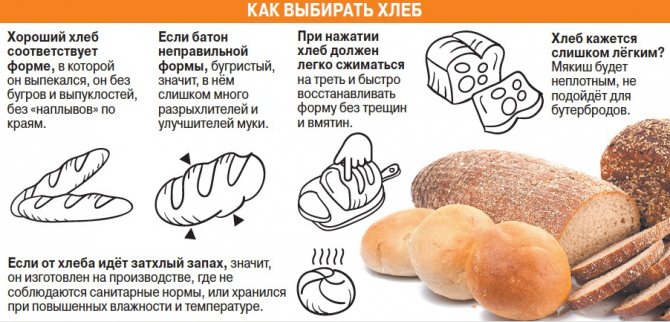
Black bread contains a lot of potassium, magnesium, and iron, which are necessary for heart function and maintaining hemoglobin levels. Vitamin B4 (choline) contributes to the proper formation of the fetus during pregnancy, and B vitamins are needed for the normal functioning of the nervous system and normal metabolism.
Table. Vitamin and mineral composition of black bread
| Vitamins | mg/100 g | Microelements | mg/100 g | |
| AT 4 | 60 | Chlorine | 680 | |
| E | 2,3 | Sodium | 400 | |
| AT 3 | 2 | Potassium | 244 | |
| AT 5 | 0,55 | Phosphorus | 194 | |
| AT 6 | 0,2 | Magnesium | 57 | |
| AT 2 | 0,09 | Sulfur | 56 | |
| AT 9 | 0,03 | Calcium | 33 | |
| IN 1 | 0,02 | Silicon | 5,5 | |
| A | 0,003 | Iron | 4,5 | |
| N | 0,002 | Zinc | 1 | |
For diets, brown bread is preferable to wheat bread, but it has several disadvantages: it is sour and is not suitable for people with high acidity and problems with the gastrointestinal tract.
Please note: Rye bread contains 165-190 kcal/100g.
Bran bread
Bran is the hard shell of the grain. In the production of refined premium flour, these “seeds” were considered waste, husks. Today it has been established that bran is the main value of cereal crops. Bran is a fiber that passes through the entire gastrointestinal tract without being digested, absorbs harmful metabolic products, cleanses the intestines of deposits stuck in it and removes them out.
Video
Eating flour baked goods with bran prevents diseases such as atherosclerosis and obesity. It is in the outer shell of the grain that all useful microelements are contained, which makes bran bread a truly healing product. All that remains is to successfully include its calorie content into your weight loss diet.
Please note: Calorie content of bran bread is 248 kcal/100 g.
Bread crumbs
Many diets recommend using dried products - crackers - instead of fresh baked goods. They are easily digested, enrich the body with B vitamins, and help with constipation. But will crackers be beneficial for weight loss?
Table. Calorie content of bakery products
| Type of bread | Kcal/100 g | Kcal per 1 piece |
| Wheat | 225-235 | 90/40 g |
| Rye | 190-215 | 87/40 g |
| Grey | 275-280 | 112/40 g |
| Black with oil | 297 | 89/30 g |
| Toast | 310-312 | 47/15 g |
| Rye crackers | 295 | 30/10 g |
| Bread | 320 | 32/10 g |
The table shows that the calorie content of dried baked goods: toast, crackers, bread, is much higher than all other types of baked goods, including loaves. This is explained by the fact that bread crumbs contain little water and more dry substances. At the same time, crackers and bread have a lower glycemic index. This means that their carbohydrates are gradually absorbed by the body and are in no hurry to turn into fat reserves. Therefore, from time to time you can allow yourself crackers and bread in addition to liquid dishes and tea.

Popular recipe for homemade crackers
- Cut a loaf of bread (yesterday's, the day before yesterday) into cubes.
- Grind dill and parsley.
- Mix everything with herbs and salt.
- Dry for a quarter of an hour in the oven at t°=170°.
- Turn bread cubes every 4-5 minutes.
- Remove from the oven, sprinkle with water, and dry for another 6-8 minutes.
- Consume in moderation, given the high calorie content of crackers.
Toast
In Europe, fried bread slices soaked in egg are considered a separate dish. Croutons are served for breakfast and used in sandwiches for the holiday table. Salty croutons - croutons - are prepared from any type of bakery product. They are fried in oil, salted and peppered. For sweet croutons, only wheat bread is used. They are soaked in milk and sprinkled with sugar. Croutons are high in calories and are good for restoring strength when exhausted, but not for those who want to lose weight.
Please note: Calorie content of croutons is 270-390 kcal/100 g.
Indications for use
- Bran contains a large amount of fiber. This is a dietary fiber that perfectly cleanses the intestines of accumulated toxins.
This improves the general condition of the gastrointestinal microflora, normalizes stool, and improves metabolism. This property is useful for diabetes.Recommended in small quantities for pregnant women as they often have problems with bowel movements.
- In the stomach, fiber increases in volume , so baking with bran causes a feeling of fullness for a long time. This effect is used in dietary nutrition and for weight loss.
- Bread contains a large amount of iron ; only 20 grams of bran provide the daily requirement for this microelement.
- Solid fibers bind acids , which ensure the absorption of harmful unsaturated fats and cholesterol. This property can be used for the prevention and treatment of atherosclerosis.
- B vitamins . They have a greater effect on the regulation of the nervous system, improve mood and the body’s emotional defense reactions to stress.
- Vitamin E. Improves the condition of the skin, hair and nails.
- A variety of macro- and microelements is presented .
Zinc ensures normal brain function. Potassium regulates cardiovascular activity. Magnesium normalizes intestinal motor activity and the functioning of muscle fibers, including the heart. Selenium is a known element that interacts with vitamins E and C as an antioxidant. It also prevents the appearance of free radicals, which is the prevention of cancer. Selenium improves the absorption of iodine, so bran bread with seaweed is useful for iodine deficiency. Strengthens the walls of blood vessels - sodium. - Bran contains omega-3 fatty acids , which help maintain hormonal balance in the body.
